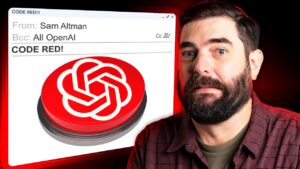“ Your customers are your best salespeople. They’re the ones that don’t have to market your full suite of services or show your products in the perfect lighting to make the sale. All they need to do is tell an interested friend (with the same pain point) how much they enjoy your company—and you just got a new customer.” Posted on the DigitalMarketer.com blog.
Interesting article regarding: How to Set Up Your First Affiliate Marketing Program for Your Business by Eva Gutierrez that I found on the DigitalMarketer.com blog.
*Caveat: All images, videos, audios & content are the property of their respective owners/authors. If they fail to appear because they have been moved or removed, you can refer to the source here.

Your customers are your best salespeople. They’re the ones that don’t have to market your full suite of services or show your products in the perfect lighting to make the sale. All they need to do is tell an interested friend (with the same pain point) how much they enjoy your company—and you just got a new customer.
That’s the power of a raving fan. Forget the strategic copy and just-the-right-color “Buy Now” buttonS…affiliate marketing is your knight in shining armor.
Your affiliate marketing program gives incentives to your customers if they refer a customer to your services or products.
→ A marketing agency can give a $1,000 cash bonus (or $1k off their next invoice) to any of their customers who refer a friend.
→ An ecommerce store can give a 10% discount to anybody who refers a friend to buy at least $50 worth of products.
Affiliate marketing is baked into the Customer Value Journey.
Once your customers have ascended to your high-tier offers, they become brand advocates. When somebody asks where they got their jacket from, they happily tell them it came from your ecommerce store. This is the stage of the CVJ where affiliate marketing begins.
After a customer becomes a brand advocate, they transition into becoming a promoter. This is peak affiliate marketing where you’ve incentivized your customer to want to share the message with their friends, family, and audience. Instead of waiting for someone to ask where their jacket is from to promote your company…they’re tagging your ecommerce store in their Instagram feed and going out of their way to make sure their audience knows where it came from.
That’s the type of affiliate marketing that we’re teaching you.
The kind that turns your customers into raving fans of your products…that then bring in more customers…who become raving fans of your products…who bring in more customers…
We’re building a flywheel, where the more customers you bring into your business—the more business you get.
Affiliate marketing lets you have your cake and eat it too.
Here are the 5 steps you’ll take to set up your first affiliate marketing program.
Step 1: What Do Your Customers Want in Return for Referrals?
Just like building out your products and offers, we have to start with your customer avatar. Your marketing agency can’t give them a month of free paid advertising if they’re not interested in running paid ads. If they don’t want what your affiliate program is offering them, they won’t actively promote your products.
And that’s the opposite of what we want to happen.
We want to create an incentive that’s so good, your customers are dying to be part of your program. That could mean you’re:
- Giving discounts
- Sending cash
- Allowing special access
- Creating exclusive merchandise
…in return for the promotion from your customers.
If you’re not sure what your customers consider worthy of their testimonial, ask them. The key to asking is giving your customers options. Copy and paste this into a Google form or your email list (and tag each response, so you know how many votes you got per response!).
“Hey [Name]!
We have really exciting news. We’re launching our affiliate program in a few weeks, which means you’ll get gifts, discounts, or cash in return for every referral you send our way. To make this the best deal possible for you, we want your feedback on which of these 3 options would be the most useful for you:
- Referring customers in return for product discounts
- Referring customers in return for cash
- Referring customers in return for exclusive access to [product].
Let us know which option you’d prefer as a member of our affiliate program and keep an eye out for the program launching soon.
Thank you for your time. We sincerely appreciate all of our customers.”
Make sure to come up with a few ideas as to what you can offer your customers in return for referrals before you move on to Step 2.
Step 2: What Can You Afford to Give Per Referred Customer?
Now comes the business side of affiliate marketing. We can’t just give your customers free products, cash, or special access without crunching the numbers. Your affiliate program isn’t made to narrow your margins…if anything, we want to widen them!
If you don’t have to pay Zuckerberg to show your ads to the right people, you could end up spending less on customer acquisition with your affiliate program in comparison to your other marketing efforts.
But, you have to know how much you can afford to pay per referral. For example, paying $1,000 per referred customer works great for a marketing agency with a minimum contract of $40,000. But, it doesn’t work so well for an ecommerce company with an average order value of $125.
Based on the incentives you figured out in Step 1, crunch the numbers to see which one makes the most sense for your business.
Here are a few formulas that can help you narrow down what you can afford to give your affiliate partners:
- Customer lifetime value
- Average order value
- Cost per acquisition
Remember, your affiliate program’s incentive can change over time. You’re not writing this in stone—you’re plugging it into an affiliate software or (at the start) manually sending each affiliate their commission. Start with what seems to work best and if things start to go awry, you can change your incentive in the future.
Step 3: Choose Your Preferred Software
When you’ve reached this point in your affiliate program, you’ve done all the hard work. It’s smooth sailing from here. Now it’s time to go into the logistics of your affiliate program. We want to set you up with the best software based on your incentive.
For example, if your incentive is cold hard cash—you need a referral software that can send someone that cash once their referral buys your product. Course platforms like Thinkific and Teachable do this automatically, sending your course affiliates their commission without you having to do any work.
If you’re a marketing agency sending out a few referral payments a month, you can automatically do this. Each time an affiliate’s referral signs a contract, you can have one of your team members send them an invoice they can cash in.
If your referral program is a little more complicated than that, you’ll need to find software to keep track of referrals for you. For example, we have a referral program for our DM Insider newsletter. Depending on how many subscribers you send our way, you can win various prizes:
- A DigitalMarketer hat
- Our marketing mug
- A DigitalMarketer logo backpack
- A flight to our Austin office!
Choose your software based on the incentive of your affiliate program.
Step 4: Talk About Your Affiliate Program
Once you’ve hit publish on your affiliate program, it’s time to talk about it! Your affiliate program is practically a product within itself. You have to tell your audience about it and get it off the ground (just like with all of your new products and services).
Launch a beta test of your affiliate program to your audience and see how well it’s received.
- How many people signed up?
- How many people clicked to learn more?
- How many people have already shared their affiliate link?
Your beta test can take a few weeks or a few months depending on the size of your customer base. For example, if you’re launching an affiliate program for a 500,000 person email list—you just need a few weeks (at a maximum) to see how well it’s working. But, if you’re launching your program to 10 agency clients, you’ll need more time to see how well it works.
Just remember the golden rule of affiliate marketing…
Ask your customers to join.
Don’t assume they’ll hop right in the first time they read about it. Keep asking them to join and reminding them of the incentives that come from referring friends, family, and their social audience your way.
This is the creator economy—the economy of micro and nano-influencers who are happy to talk about products that solved their pain points. You just need to show your customers how they can market your products for you…which leads us to the last step of setting up your affiliate program.
Step 5: Market Your Affiliate Program Like You Do Your Products
What’s more meta than marketing your marketing strategy? Your affiliate program is like its own offer, which means you have to look at it as a product that needs a proper marketing strategy behind it.
This means you want to A/B test your copy, images, CTAs, color choices, incentives, and more. Your affiliate program could go to the moon, but you have to give your audience a reason to take it there. Marketing your affiliate program means that you’re tapping into:
- A/B tests on copy and graphics
- Happy affiliate testimonials
- Friction-less sign ups
Even with a great incentive, your customers still need to know that this program is massively beneficial for them. Keep marketing your affiliate program to instill in your customers that signing up is just as much for them as it is for you.
And remember—they want you to ask them to join. Don’t be afraid to keep asking them to become an affiliate, creating content around what it’s like to be an affiliate for your company, and showing them how well other affiliates are doing in the program.
Setting Up Your First Affiliate Program
Your affiliate program could double your business in its first months or years. That’s because people love to have their friends, family, and people they look up to online give them advice. It’s the same reason you’re reading this article—if you can do something the right way the first time, we’ll all choose that option every time.
→ We’d rather hire the right marketing agency the first time, over dealing with thousands of dollars wasted on the wrong one.
→ We’d rather buy the right BBQ grill the first time, rather than try to return a grill that didn’t live up to expectations.
Follow these 5 steps to set up your affiliate marketing program:
Step 1: Ask your customers what’s worth their referral
Step 2: Figure out what you can afford to give
Step 3: Choose your preferred software
Step 4: Talk about your affiliate program
Step 5: Market your affiliate program like you do your products
And remember, your affiliate program can change over time. Allow it to be fluid as you figure out what incentive resonates best with your audience and how you can make it a frictionless experience to sign up.

What do you think? Share your thoughts in the comments below! If you would like to check the source or if the respective owners have moved the images, etc., displayed in this article, you can see them here.
How to Set Up Your First Affiliate Marketing Program for Your Business
#DigitalMarketing #AffiliateMarketing



